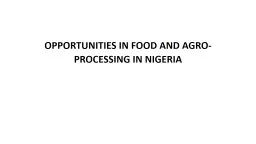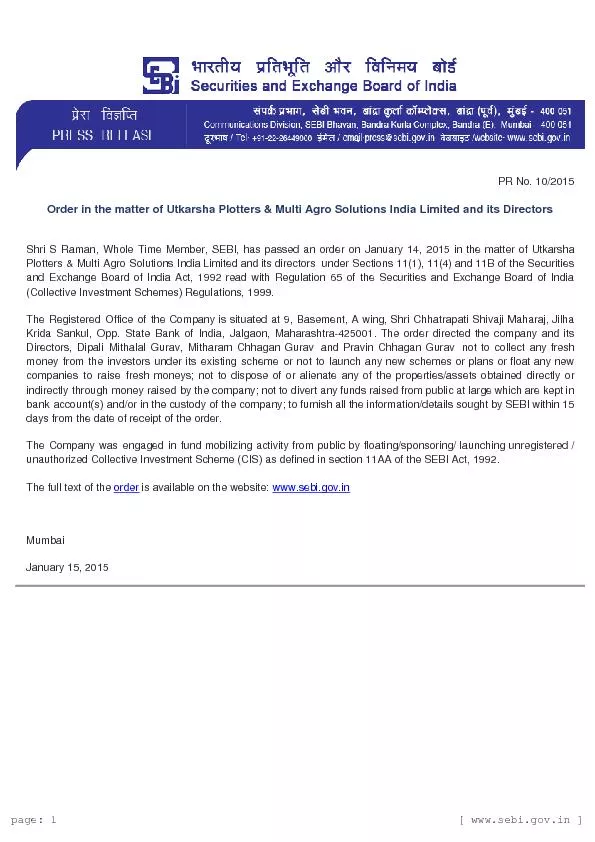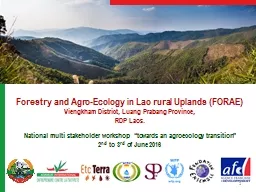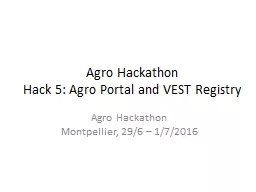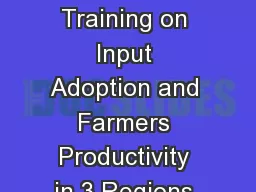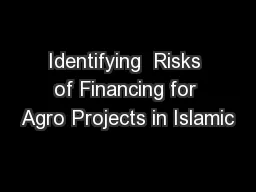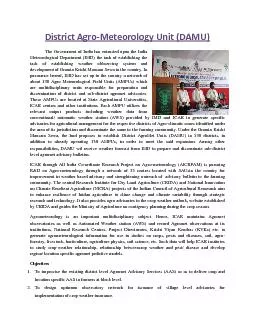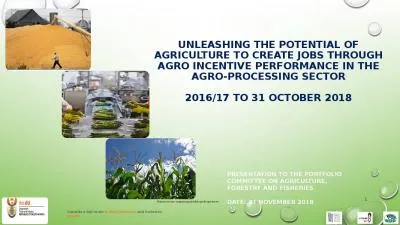PPT-OPPORTUNITIES IN FOOD AND AGRO-PROCESSING IN NIGERIA
Author : lastinsetp | Published Date : 2020-10-22
OPPORTUNITIES IN FOOD AND AGROPROCESSING IN NIGERIA HEAD WOMEN IN AGRICULTURE AND NUTRITION LAGOS STATE AGRICULTURAL DEVELOPMENT AUTHORITY TEL 07038590492 08073718271
Presentation Embed Code
Download Presentation
Download Presentation The PPT/PDF document "OPPORTUNITIES IN FOOD AND AGRO-PROCESSIN..." is the property of its rightful owner. Permission is granted to download and print the materials on this website for personal, non-commercial use only, and to display it on your personal computer provided you do not modify the materials and that you retain all copyright notices contained in the materials. By downloading content from our website, you accept the terms of this agreement.
OPPORTUNITIES IN FOOD AND AGRO-PROCESSING IN NIGERIA: Transcript
Download Rules Of Document
"OPPORTUNITIES IN FOOD AND AGRO-PROCESSING IN NIGERIA"The content belongs to its owner. You may download and print it for personal use, without modification, and keep all copyright notices. By downloading, you agree to these terms.
Related Documents

